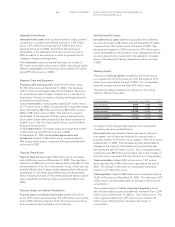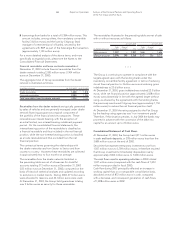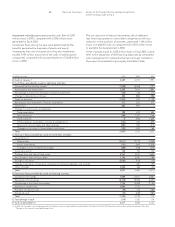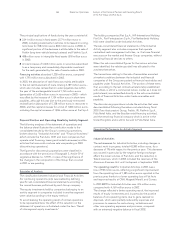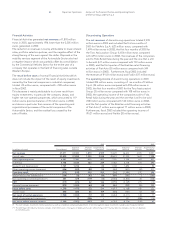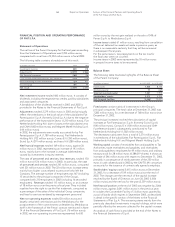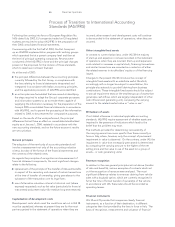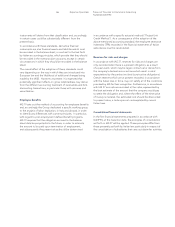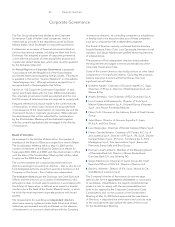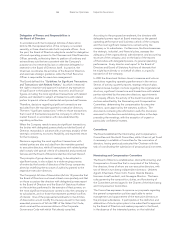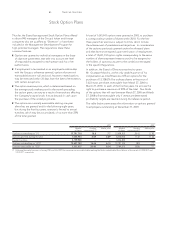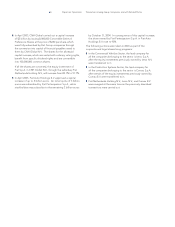Chrysler 2003 Annual Report Download - page 37
Download and view the complete annual report
Please find page 37 of the 2003 Chrysler annual report below. You can navigate through the pages in the report by either clicking on the pages listed below, or by using the keyword search tool below to find specific information within the annual report.
36 Report on Operations Process of Transition to International Accounting
Standards (IAS/IFRS)
instruments will derive from that classification and, accordingly,
in certain cases could be substantially different from the
present basis.
In accordance with these standards, derivative financial
instruments are also financial assets and liabilities which must
be recorded in the balance sheet, in contrast to that set forth
by Italian accounting principles, which provide that they should
be recorded in the memorandum accounts, except in certain
circumstances in which they should be recorded in the balance
sheet.
The overall effect of the adoption of these standards could
vary depending on the way in which they are introduced into
European law and the likelihood of additional changes being
made by the IASB. However, at present it is expected that
potentially significant effects on gross indebtedness may derive
from the different accounting treatment of receivables and bills
discounting transactions, in particular those with recourse and
securitization.
Employee benefits
IAS 19 sets out the method of accounting for employee benefits
and, accordingly, the Group dedicated a specific working group
to the analysis of labor legislation, in Italy and abroad, in order
to identify any differences with current principles. In particular,
with regard to post-employment defined benefit programs,
IAS 19 requires that the obligation accrued to the balance
sheet date be projected into the future, in order to estimate
the amount to be paid upon termination of employment,
and subsequently the present value should be determined
in accordance with a specific actuarial method (“Project Unit
Credit Method”). As a consequence of the adoption of the
above-mentioned accounting standard, the employee severance
indemnity (TFR) recorded in the financial statements of Italian
subsidiaries must be recalculated.
Reserves for risks and charges
In accordance with IAS 37, reserves for risks and charges are
only recorded when there is a present obligation, as a result
of a past event, which may be legal, contractual or derive from
the company’s declarations or actions which result in valid
expectations by the parties involved (constructive obligations).
Certain reserves which are at present recorded, in accordance
with the Italian laws in force, may not satisfy all of the conditions
provided by IAS for their recognition. Furthermore, in accordance
with IAS 37 accruals are recorded at the value represented by
the best estimate of the amount that the company would pay
to settle the obligation and, where the effect of the time value
of money is material, the estimated cost should be discounted
to present value, a technique not contemplated by current
Italian laws.
Consolidated financial statements
In the first financial statements prepared in accordance with
IAS/IFRS, at the transition date, the principles of consolidation
set forth in IAS 27 will be applied. These principles differ from
those presently set forth by Italian law particularly in respect of
the consolidation of subsidiaries that carry out dissimilar activities.


